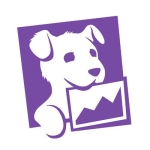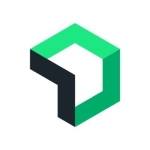What is our primary use case?
We use Dynatrace for all our client-facing or student-facing core web systems, which give students access to their information. We are monitoring all those for user expectation and user experience management. We are also using application performance management metrics to detect and troubleshoot issues which pop up from time to time because it is a job. It's a Java-based environment that we're monitoring.
Dynatrace AppMon has served us very well. We are able to get insights into our systems, which previously took us weeks to be able to detect. It gives us a much better view on the performance of our environments.
How has it helped my organization?
One of the big benefits is being able to manage user expectation to better understand what the performance of our systems are versus what the users expect of those systems. We are also able to scale.
We can prevent major system downtime because the system uses baseline monitoring. It can when something is about to horribly wrong and affect systems in a short while. This has helped a lot. We are more pro-active instead of reactive. Reactive monitoring in IT is always viewed in a bad light. People don't like it when you just react to problems.
What is most valuable?
Keeping a record of full user transactions which we can then go back to the SIEM. Mostly, when a user complains about poor performance, it's very difficult to put a metric on it. With Dynatrace, we can actually go into the user's transaction and look at all the transactions the user has. We can see the actual metrics behind those transactions and what caused them to slow down and have poor performance.
If it's a case of the user's ISP and it is not actually our system that is the problem, it has given us a lot of capability to provide feedback to users, and say, "The system was slow because you were working from a slow ISP connection," or "You were working from a degraded browser." This helps specifically for cases where we want to educate our users on how to get the best performance out of their systems.
What needs improvement?
There is still a certain amount of technical skills needed to be able to understand what you are seeing on it. You also need a large amount of technical or infrastructure skills to understand how and where to install it.
The reason why we are looking at Dynatrace OneAgent is because Dynatrace OneAgent is better at troubleshooting than AppMon. Dynatrace OneAgent now comes with analytic engines and an AI system which helps you troubleshoot quickly. It also does root cause analysis. Therefore, we wouldn't need to do root cause analysis anymore, since it would show us the exact point where things go.
The capability development and user experience management that OneAgent would gives us is a step above what we have with AppMon. For example, we can see exactly what our full user compliment is leading us towards. With AppMon, we could determine:
- How they use the systems.
- What systems they use the most.
- What effects there are if something goes down.
- How the user is affected.
Buyer's Guide
Dynatrace
December 2025
Learn what your peers think about Dynatrace. Get advice and tips from experienced pros sharing their opinions. Updated: December 2025.
879,310 professionals have used our research since 2012.
For how long have I used the solution?
One to three years.
What do I think about the stability of the solution?
Patching and updating is very easy. The system's stability is good.
What do I think about the scalability of the solution?
Depending on how much storage you allocate, you can actually keep quite a lot of information in regards to your system. You can scale it yourself. The system doesn't force you into a specific storage medium.
It's able to scale linearly and vertically. It doesn't matter how many systems you have. You can just plugin more collectors and agents. It does this very well.
How are customer service and support?
Every now and again, we contact technical because we have a few questions and they are very responsive and helpful. If it's a problem that we cannot figure out over the phone, they will make an appointment. They will come to our site. It's all part of the support contract, and there is no extra charges for it, which is good.
Which solution did I use previously and why did I switch?
Previously, we were using infrastructure monitoring to a large extent. We didn't have application performance management. We realized that we have been spending a lot of time trying to figure out why applications were not performing correctly. That's the main reason why we went for the AppMon solution.
How was the initial setup?
The initial setup was a bit technical.
What about the implementation team?
We've used technical support mainly for the original setup.
What was our ROI?
The time that we save troubleshooting or finding the actual issues within the application execution.
Which other solutions did I evaluate?
The vendors on our shortlist were AppDynamics, CA, and Dynatrace. We chose Dynatrace because they performed the best during our PoC trials. It was the best all-round monitoring platform.
What other advice do I have?
Make sure that you understand the scope before you start looking at application monitoring. Understand your environment.
Most important criteria when selecting a vendor:
- They must have support in our country, so we may be able to contact them locally.
- They must be able to fit to our functional requirements up to 80% or better.
- They must be able to fit into the space that we operate in, which is the tertiary educational space.
- They must be able to integrate with our current systems, as much as possible.
Disclosure: My company does not have a business relationship with this vendor other than being a customer.















